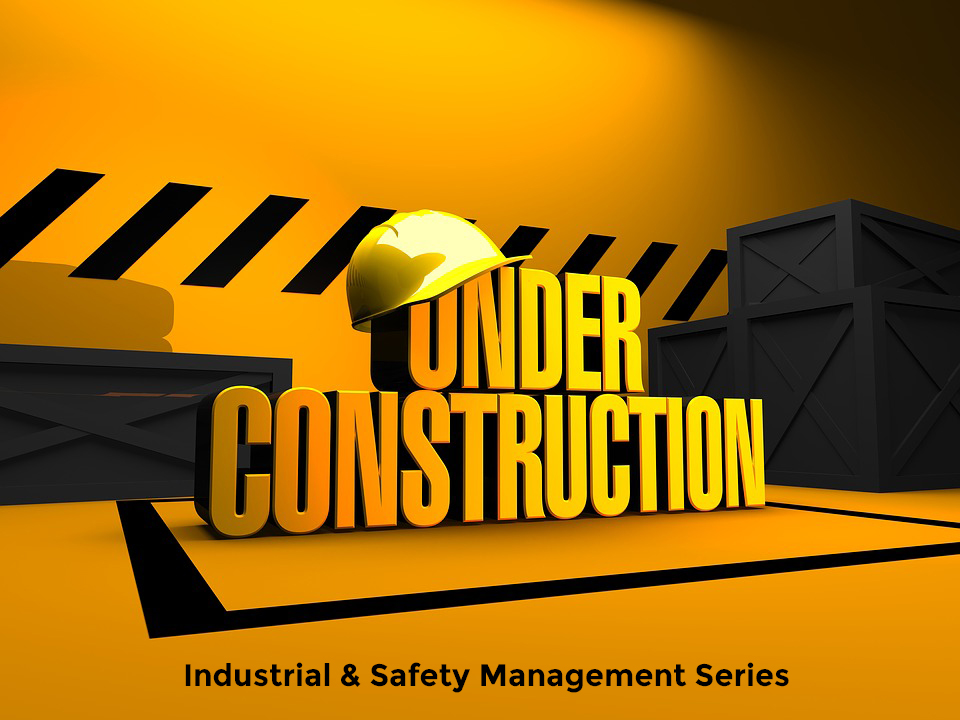
Preventing hazards at Excavation sites
Trenching, excavations, and pits pose a serious hazard to workers as well as people moving around them. Cave-ins pose a great risk, many a timesleading to fatalities. We must therefore always remember when we excavate are we constructing or digging a grave for someone innocent?
Do you know, 1 cum of soil weighs between 1.2 to 1.6 tonnes!!! That is about 24 to 32 bags of cement (each weighing 50 kg). Imagine that many bags falling on you when you are in a pit!!. Therefore an unprotected excavation or a trench is a potential grave, so we as engineers must always be conscious of this fact and ensure the safety of the workers working in excavation pits by providing adequate protection measures in the pits before putting workers into it. Any excavation more than 4 ft deep becomes potentially fatal, because if one is buried chest deep, it becomes life-threatening.
We can protect the workmen from cave – ins by
Supporting the sides of the excavation
Sloping and benching the sides of the excavation, or
By providing a shield between the excavation and work area
Protective systems need to be properly designed .The nature of the soil and its classification, the water content, the climatic conditions, the cutting depth, movement of heavy equipment in the nearby vicinity and nearby utilities and other structures and its foundations are some of the factors to be considered for a robust excavation protection system. One can slope excavations at an angle not steeper than 1 1⁄2: 1 meaning for every one foot of depth excavated, the trench must be excavated 1 1⁄2 ft backward which is considered safe for most of the soils. Using trench boxes or shields is another method of protecting excavation pits from cave-ins. Shoring with a system of horizontal, vertical and inclined members is another means of protection which is to be designed and then erected.
Excavations must have ladders for escape at approximately every 45 ft interval and height 3 ft above the excavation top. Lifelines in deep excavations with proper anchorage are desirable.
Other than cave-ins, workers are exposed to hazards on account of mobile equipment moving in the close vicinity of excavations, falling loads and asphyxiation due to subsoil gases.
Workers can be protected from falling loads by keeping the excavated debris at least 2 ft away from the excavated edges. Movement of heavy equipment in close proximity is to be restricted and adequate barricading and warning signs are to be provided.
Adequate underpinning to adjacent exposed foundations is a must to ensure the safety of these structures.
Testing atmospheric hazards for excavations more than 4 ft to check oxygen levels and hazardous fumes is a good practice before allowing workmen to enter the excavation pits.
A small effort of inspection excavation pits at the start of every shift and in case of weather conditions such as rains and storms are simple acts that can go a long way to ensure the safety of workmen.
When excavating, promote safety for life…
Sonali P Deshpande
21st Aug 18
Founder – SpringBoard Mentors
About the Author – Graduate Civil Engineer (VJTI Mumbai), Post graduate in Projects Management (NICMAR Pune) ,Contracts Management certification (NICMAR Pune) , Workplace Safety certification (NEBOSH UK) – 25 years of comprehensive experience in Construction , Projects Management , Contracts Management , Safety Management , training.
References – OSHAS Occupational Health and Safety Administration – Trenching and excavation Safety 2226-10R 2015
Indian Standard IS 3764 – Code of safety for excavation work





